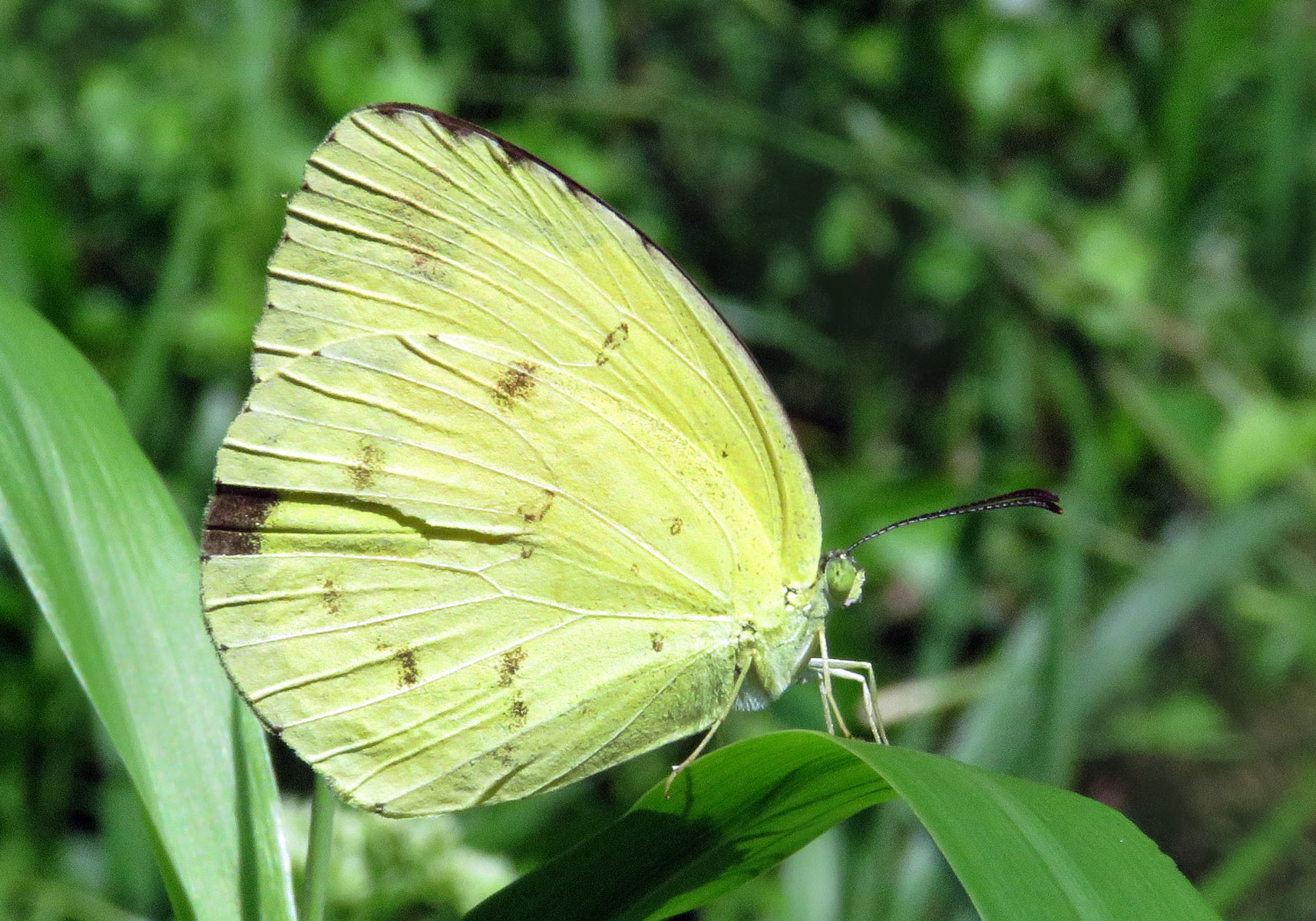Eurema andersonii has lemon yellow wings on the upper sides with the hind wings having a thin black border and the forewings having a thick black border between veins 2 and 4. The undersides of the wings are yellow with brown spots forming a pattern. Male individuals have long markings on the cubital veins of the forewings.
Larva: larvae of Eurema andersonii measuring 1.8 – 1.9 mm, cylindrical, pale white with a body covered with turbecles and setae that line lengthwise, at the end of the setae there are liquid droplets. In the final stage the instars are yellowish in color, the setae is more numerous and shorter.
Pupa: Eurema andersonii pupa is yellowish green, the head is pointed, the dorsal band is pale brown that extends from anterior to posterior. The pupa is about 17 mm long.


